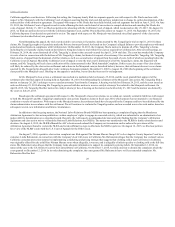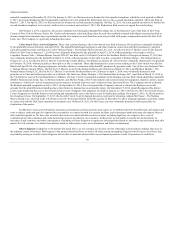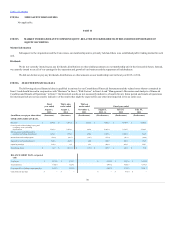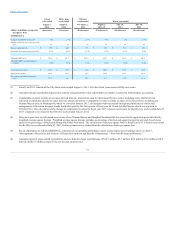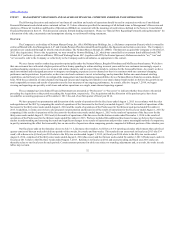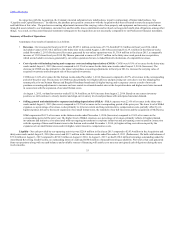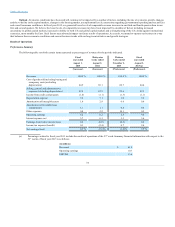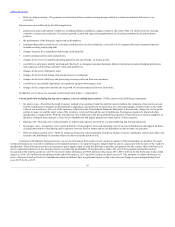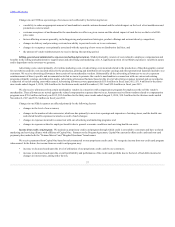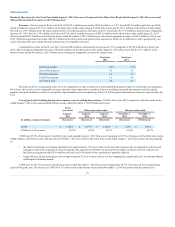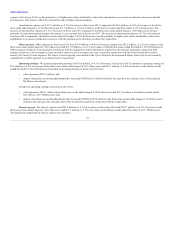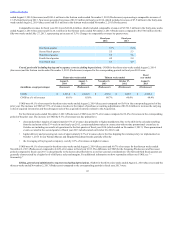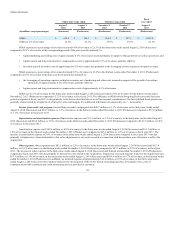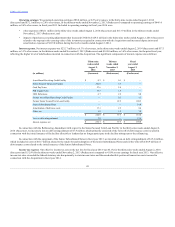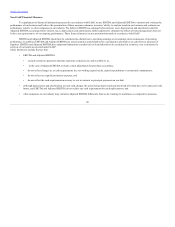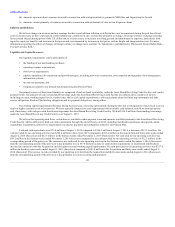Neiman Marcus 2014 Annual Report Download - page 39
Download and view the complete annual report
Please find page 39 of the 2014 Neiman Marcus annual report below. You can navigate through the pages in the report by either clicking on the pages listed below, or by using the keyword search tool below to find specific information within the annual report.
Table of Contents
• increase or decrease based upon future changes to our credit card program in response to changes in regulatory requirements or other changes
related to, among other things, the interest rates applied to unpaid balances and the assessment of late fees; and
• decrease based upon the level of future marketing and other services we provide to Capital One.
Effective income tax rate. Our effective income tax rate may fluctuate from period to period due to a variety of factors, including changes in our
assessment of certain tax contingencies, valuation allowances, changes in federal, state and foreign tax laws, outcomes of administrative audits, the impact of
accounting for stock‑based compensation, changes in our corporate structure, the impact of other discrete or non‑recurring items and the mix of earnings
among our U.S. and international operations, where the statutory rates are generally lower than in the United States. As a result, our effective income tax rate
may vary significantly from the federal statutory tax rate.
We conduct our selling activities in two primary selling seasons—Fall and Spring. The Fall season is comprised of our first and second fiscal
quarters and the Spring season is comprised of our third and fourth fiscal quarters.
Our first fiscal quarter is generally characterized by a higher level of full-price sales with a focus on the initial introduction of Fall season fashions.
Marketing activities designed to stimulate customer purchases, a lower level of markdowns and higher margins are characteristic for this quarter. Our second
fiscal quarter is more focused on promotional activities related to the December holiday season, the early introduction of resort season collections from
certain designers and the sale of Fall season goods on a marked down basis. As a result, margins are typically lower in our second fiscal quarter. However, due
to the seasonal increase in revenues that occurs during the holiday season, our second fiscal quarter is typically the quarter in which our revenues are the
highest and in which expenses as a percentage of revenues are the lowest. Our working capital requirements are also the greatest in the first and second fiscal
quarters as a result of higher seasonal requirements.
Our third fiscal quarter is generally characterized by a higher level of full-price sales with a focus on the initial introduction of Spring season
fashions. Marketing activities designed to stimulate customer purchases, a lower level of markdowns and higher margins are again characteristic for this
quarter. Revenues are generally the lowest in our fourth fiscal quarter with a focus on promotional activities offering Spring season goods to customers on a
marked down basis, resulting in lower margins during the quarter. Our working capital requirements are typically lower in our third and fourth fiscal quarters
compared to the other quarters.
A large percentage of our merchandise assortment, particularly in the apparel, fashion accessories and shoe categories, is ordered months in advance
of the introduction of such goods. For example, women’s apparel, men’s apparel, shoes and handbags are typically ordered six to nine months in advance of
the products being offered for sale while jewelry and other categories are typically ordered three to six months in advance. As a result, our success depends in
large part on our ability to anticipate and identify fashion trends and consumer shopping preferences and to identify and react effectively to rapidly changing
consumer demands in a timely manner.
We monitor the sales performance of our inventories throughout each season. We seek to order additional goods to supplement our original
purchasing decisions when the level of customer demand is higher than originally anticipated. However, in certain merchandise categories, particularly
fashion apparel, our ability to purchase additional goods can be limited. This can result in lost sales opportunities in the event of higher than anticipated
demand for the merchandise we offer or a higher than anticipated level of consumer spending. Conversely, in the event we buy merchandise that is not
accepted by our customers or the level of consumer spending is less than we anticipated, we could incur a higher than anticipated level of markdowns, net of
vendor allowances, resulting in lower operating profits. Any failure on our part to anticipate, identify and respond effectively to these changes could
adversely affect our business, financial condition and results of operations.
38


